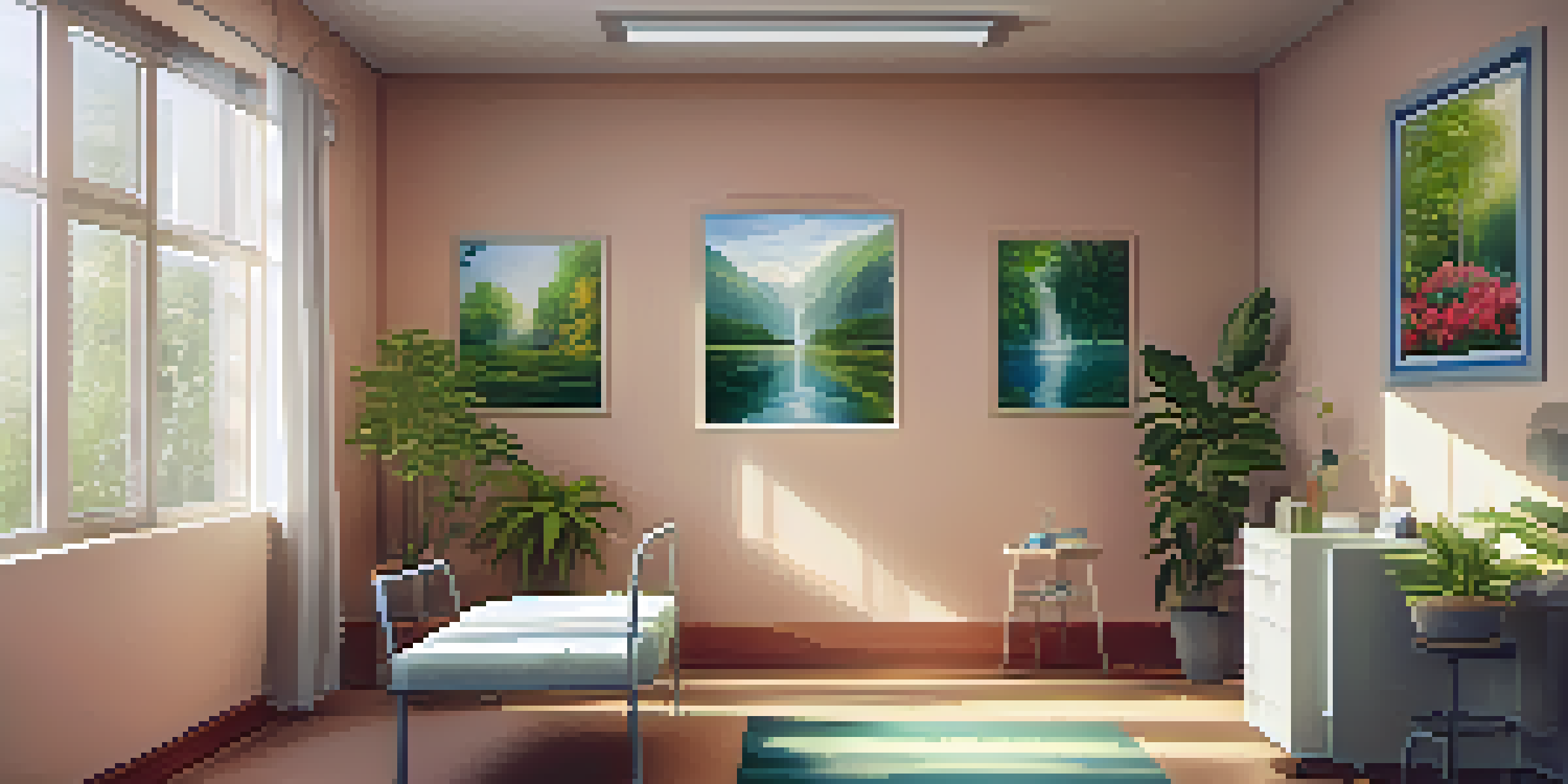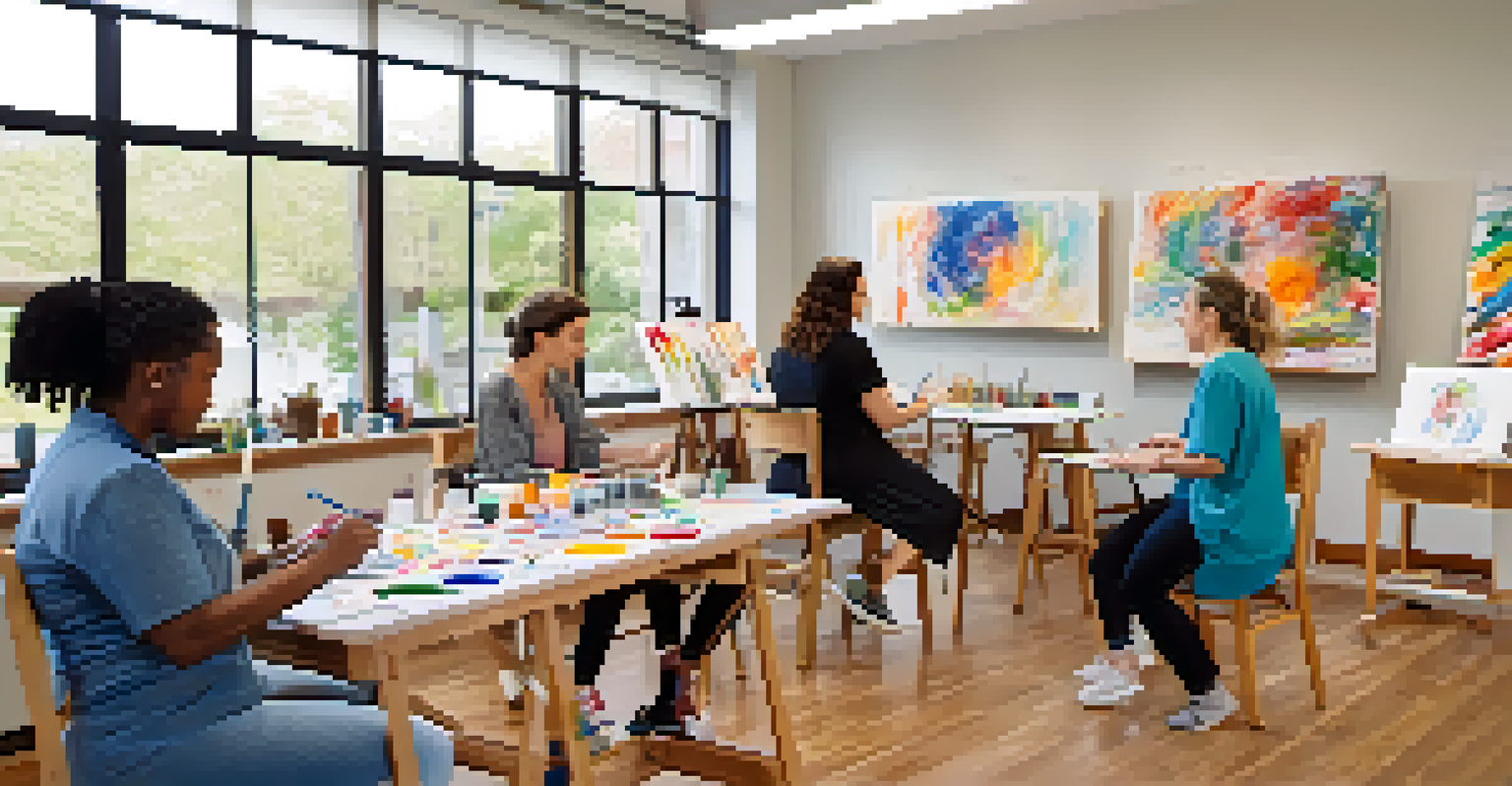Art's Influence on Pain Perception and Patient Comfort

Understanding Pain Perception in Healthcare Settings
Pain perception is a complex interplay between physical sensations and emotional responses. It varies significantly from person to person, influenced by factors like psychological state, cultural background, and previous experiences. For patients in healthcare environments, understanding this variability is crucial, as it shapes how they cope with pain and discomfort.
Art is the most beautiful of all lies; it is a lie that tells the truth about the human condition.
In clinical settings, patients often experience heightened anxiety, which can amplify their pain perception. This context makes it essential for healthcare providers to adopt holistic approaches that consider not only the physical aspects of pain but also the emotional and psychological dimensions. By addressing these factors, patients may find greater relief and comfort during their treatment.
Art, in its many forms, can play a pivotal role in this understanding. By creating a more inviting and comfortable atmosphere, art helps reduce anxiety and distraction, allowing patients to focus on healing rather than their pain.
The Science Behind Art and Pain Relief
Research has shown that engaging with art can lead to measurable decreases in pain. For instance, studies indicate that patients who view or create art report lower pain levels than those who do not. This phenomenon can be attributed to art's ability to evoke positive emotions and distract from painful sensations.

Moreover, the therapeutic effects of art extend beyond mere distraction. Engaging with art can stimulate the release of endorphins, the body's natural painkillers, which contribute to a sense of well-being. This biochemical response underscores the profound connection between emotional states and physical sensations.
Art Reduces Pain Perception
Engaging with art can lower pain levels by evoking positive emotions and providing distraction.
Art therapy, which involves the use of creative processes to improve mental health, has gained traction in healthcare settings. By integrating artistic expression into treatment plans, patients can harness their creativity as a tool for coping with pain, ultimately enhancing their overall comfort.
Art's Role in Creating Healing Environments
The environment in which patients receive care significantly impacts their experience of pain. Art installations, soothing colors, and aesthetically pleasing designs can transform sterile healthcare settings into welcoming spaces. This shift in ambiance can help reduce stress and promote relaxation, making patients feel more at ease.
The arts have the power to heal, to transform, and to create a sense of belonging.
Hospitals around the world are increasingly incorporating art into their design strategies, recognizing its potential to enhance patient comfort. For example, murals, sculptures, and interactive exhibits can provide visual stimulation and encourage positive emotions, which can lessen pain perception.
Additionally, nature-themed art has been shown to have calming effects, further supporting the notion that art can facilitate healing. By surrounding patients with uplifting visuals, healthcare facilities can create environments that foster comfort and resilience during challenging times.
Personal Stories: Art Transforming Patient Experiences
Throughout healthcare settings, countless personal stories highlight the transformative power of art. Many patients have shared how engaging with art—whether through painting, music, or dance—has provided them with solace during their recovery. These anecdotes often emphasize the emotional release art can offer in the face of physical pain.
For instance, a cancer patient might find comfort in creating a visual representation of their journey, allowing them to process their feelings and fears. Such expressions not only serve as an outlet but also enable patients to reclaim a sense of control over their experiences.
Healing Through Creative Expression
Art therapy facilitates emotional processing, helping patients cope with pain and enhance their comfort.
These stories underscore the importance of integrating art into patient care. By giving patients the opportunity to express themselves creatively, healthcare providers can foster an environment of healing that addresses both the body and the mind.
Art Therapy: A Structured Approach to Healing
Art therapy is a structured, therapeutic approach that uses creative expression to help individuals process emotions and experiences. Guided by trained therapists, patients can explore their feelings about pain, illness, and healing through various artistic mediums. This process not only promotes self-discovery but also enhances overall comfort.
The techniques employed in art therapy can vary widely, from painting and drawing to sculpting and collage-making. Each medium offers unique benefits, allowing patients to choose what resonates most with their personal experiences. This flexibility encourages deeper engagement and connection with the healing process.
Furthermore, art therapy can be particularly beneficial for those who may struggle to articulate their pain verbally. By providing a non-verbal outlet, patients can communicate complex emotions and experiences, leading to greater understanding and empathy from caregivers.
Cultural Perspectives: Art and Pain Across the Globe
Cultural influences significantly shape how individuals perceive and cope with pain. Different cultures have unique approaches to art and healing, which can inform their understanding of pain. For example, some cultures utilize traditional music or dance as a means of expressing and alleviating discomfort.
Exploring these diverse perspectives reveals how art can serve as a universal language in addressing pain. In many societies, communal art practices bring people together, fostering a sense of belonging and support during challenging times. This collective experience can enhance comfort and resilience in the face of adversity.
Cultural Influences on Pain and Art
Different cultural approaches to art and healing highlight the importance of tailored treatment for diverse patient populations.
By appreciating these cultural dimensions, healthcare providers can better tailor their approaches to meet the needs of diverse patient populations. Integrating culturally relevant art forms into treatment can enhance the comfort and emotional well-being of patients from various backgrounds.
The Future of Art in Pain Management and Healing
As the field of healthcare continues to evolve, the role of art in pain management is gaining recognition. With growing evidence supporting its efficacy, more healthcare facilities are exploring innovative ways to incorporate art into patient care. This trend highlights a shift towards holistic approaches that prioritize emotional well-being alongside physical health.
Emerging technologies, such as virtual reality art experiences, are also being explored for their potential to enhance patient comfort. These immersive environments can transport patients to calming spaces, providing a powerful distraction from pain and anxiety. The possibilities are endless as technology continues to advance.

Ultimately, the future of art in pain management lies in a collaborative approach that brings together healthcare professionals, artists, and patients. By working together, we can create enriched healing environments that honor the profound connection between art, pain perception, and patient comfort.